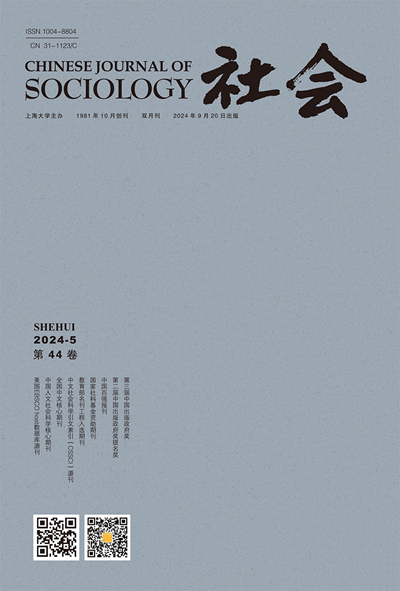学生参与民办补习教育:日本、韩国、上海和美国的比较分析
IF 1.8
4区 社会学
Q2 SOCIOLOGY
引用次数: 6
摘要
私立补习教育是指家庭购买的私人课程和正规学校以外的学习,在东亚已经广泛实行。然而,随着世界许多地区社会流动性的教育竞争愈演愈烈,它的需求甚至在东亚以外地区也在增长。这一全球趋势使得确定谁有更多机会接受私立补充教育和解决机会差异对教育不平等的影响变得非常重要。本研究比较了三个东亚社会——日本、韩国、上海(中国)和美国——家庭社会经济地位(SES)和学生先前的学习成绩与他们参加私立补习教育的关系。私立补习教育在日本和韩国都有相当规模的存在。公众和学者对中国日益盛行的私立补习教育越来越关注。美国私立补习教育虽未成为一项主要的教育策略,但对私立补习教育的需求也在上升,这可以为当代教育体系中私立补习教育的全球应用提供有益的见解。对少数社会的集中比较可以从比较的角度分析每个社会的详细模式,从而超越单一国家的研究和大规模的跨国研究。当前研究的数据来自参加2012年国际学生评估项目(PISA)国际学生成绩调查的15岁学生。2012年国际学生评估项目(PISA 2012)对私立补充教育有一个明确的衡量标准,为比较提供了一个绝佳的机会。利用2012年国际学生评估项目中四个国家15岁学生的数据,线性概率模型突出了三个东亚国家之间的异质性。在家庭经济地位对学生参与私立补习教育的影响方面,日本与韩国和上海有很大的不同。如果考虑到学校固定效应,日本家庭社会经济地位与私立补习教育的关系强度与美国相似,但弱于韩国和上海。日本和美国也相似,家庭结构与私立补习教育的关系不显著,而韩国和上海非双亲家庭的学生接受私立补习教育的可能性明显较低。学校固定效应模型还显示,学生在校期间的学习成绩与参加私立补习的关系总体为负相关。日本、上海、美国的关系是显著的负相关,只有韩国没有显著的负相关。结论部分提出了今后的研究方向。本文章由计算机程序翻译,如有差异,请以英文原文为准。
Student participation in private supplementary education: A comparative analysis of Japan, Korea, Shanghai, and the USA
Private supplementary education, which refers to private lessons and learning outside of formal schooling purchased by families, has been widely practiced in East Asia. Its demand has grown even beyond East Asia, however, as educational competition for social mobility has intensified in many parts of the world. This global trend makes it important to determine who has greater access to private supplementary education and address the implications of the differential access for educational inequality. The current study compares how family socioeconomic status (SES) and students’ prior academic performance are related to their participation in private supplementary education in three East Asian societies—Japan, Korea, and Shanghai (China)—and the USA. Private supplementary education has existed on a substantial scale in Japan and Korea. The public and scholars have increased their concerns regarding the growing prevalence of private supplementary education in China. Although it has not been a major educational strategy, the demand for private supplementary education is rising in the USA as well, which can offer a useful insight into the global application of private supplementary education in contemporary educational systems. The focused comparisons across a small number of societies allow analyses of detailed patterns in each society in comparative perspective, thus moving beyond both single-country research and large-scale cross-national studies. The data for the current study come from 15-year-old students who participated in an international survey of student achievement, Programme for International Student Assessment (PISA) 2012. With a clearly defined measure of private supplementary education, PISA 2012 provides an exceptional opportunity for comparison. Drawing on data for 15-year-old students in four societies from PISA 2012, the linear probability models highlight heterogeneity among three East Asian societies. Japan is distinctive from Korea and Shanghai in terms of the influences of family SES on student participation in private supplementary education. Once school-fixed effects are taken into account, the strength of the relationship between family SES and private supplementary education in Japan is similar to the strength in the USA, which is weaker than the strength in Korea and Shanghai. Japan and the USA are also similar in that family structure is not significantly associated with private supplementary education, while students in non-two-parent families are significantly less likely to receive private supplementary education in Korea and Shanghai. The school-fixed-effects models also show that the within-school relationship between students’ prior academic performance and their participation in private supplementary education is generally negative. Japan, Shanghai, and the USA show a significantly negative relationship, while only Korea shows no significant relationship. Future research directions are suggested in the conclusion.
求助全文
通过发布文献求助,成功后即可免费获取论文全文。
去求助
来源期刊

社会
Social Sciences-Social Sciences (all)
CiteScore
1.70
自引率
0.00%
发文量
6799
期刊介绍:
The Chinese Journal of Sociology is a peer reviewed, international journal with the following standards: 1. The purpose of the Journal is to publish (in the English language) articles, reviews and scholarly comment which have been judged worthy of publication by appropriate specialists and accepted by the University on studies relating to sociology. 2. The Journal will be international in the sense that it will seek, wherever possible, to publish material from authors with an international reputation and articles that are of interest to an international audience. 3. In pursuit of the above the journal shall: (i) draw on and include high quality work from the international community . The Journal shall include work representing the major areas of interest in sociology. (ii) avoid bias in favour of the interests of particular schools or directions of research or particular political or narrow disciplinary objectives to the exclusion of others; (iii) ensure that articles are written in a terminology and style which makes them intelligible, not merely within the context of a particular discipline or abstract mode, but across the domain of relevant disciplines.
 求助内容:
求助内容: 应助结果提醒方式:
应助结果提醒方式:


